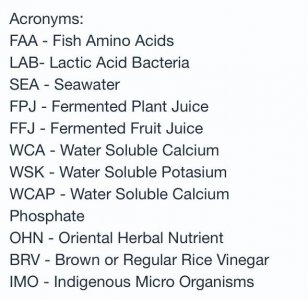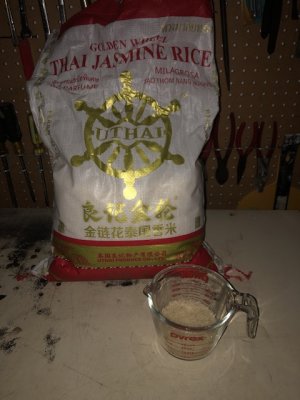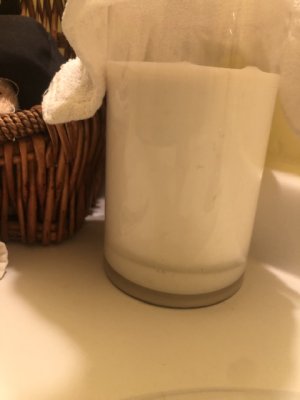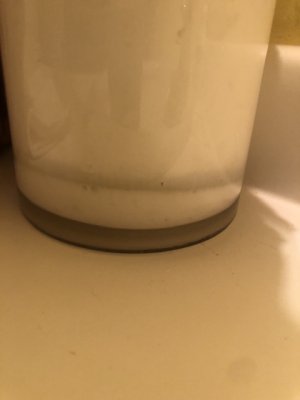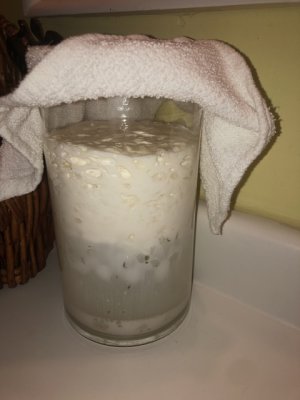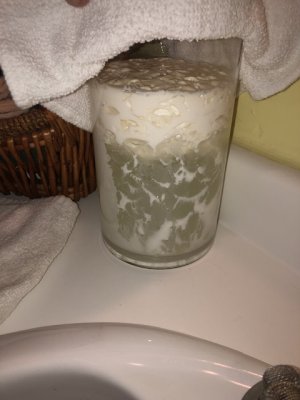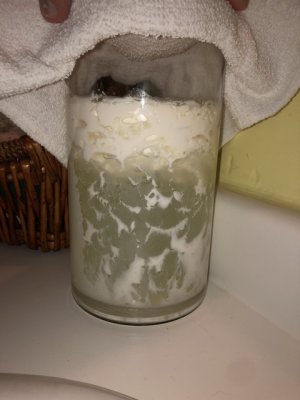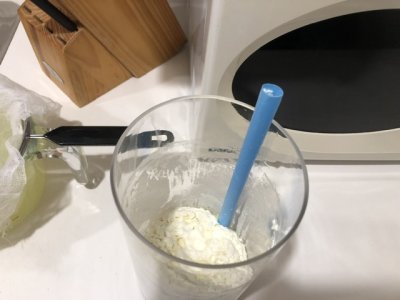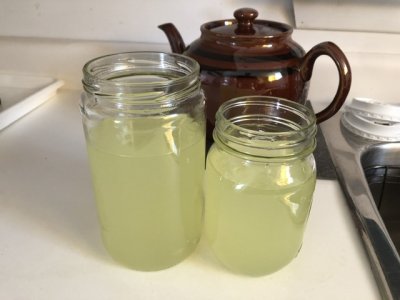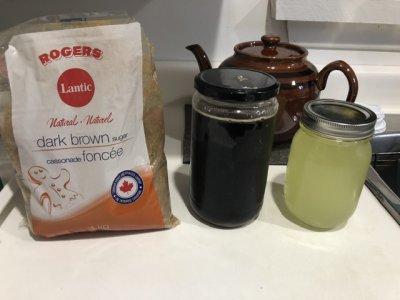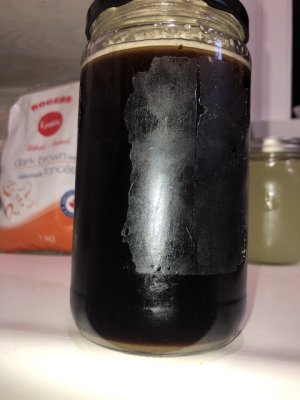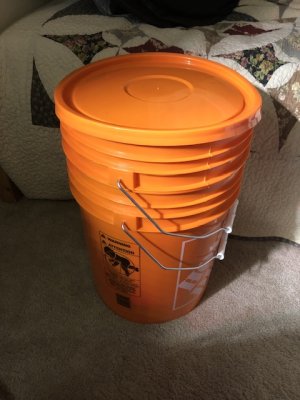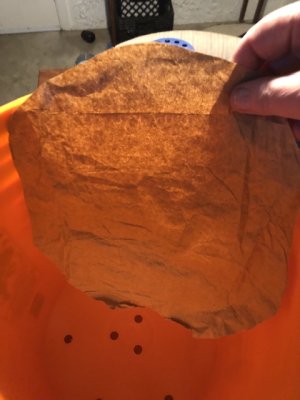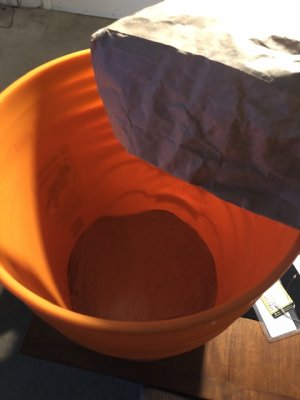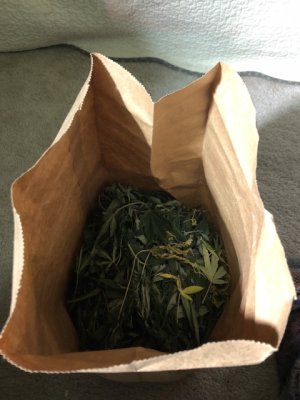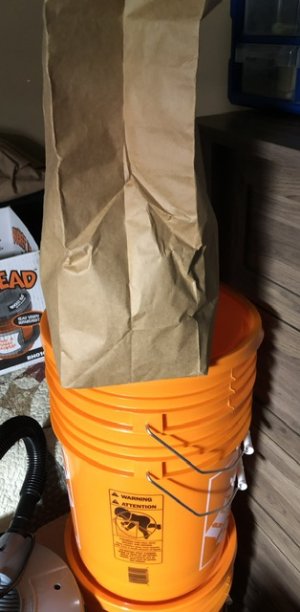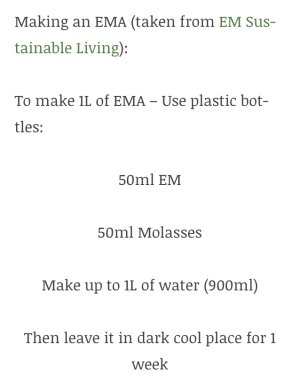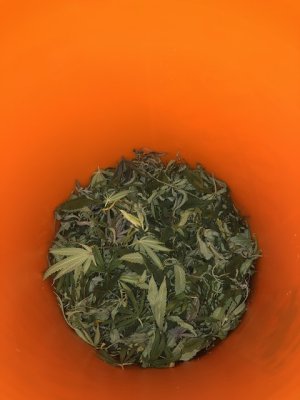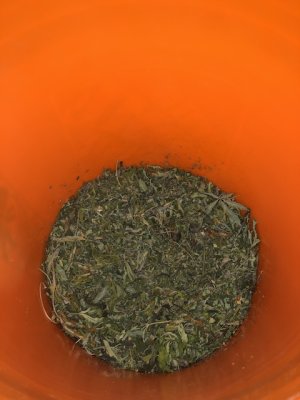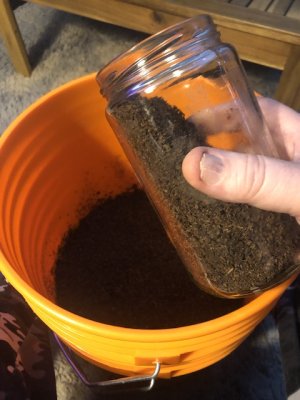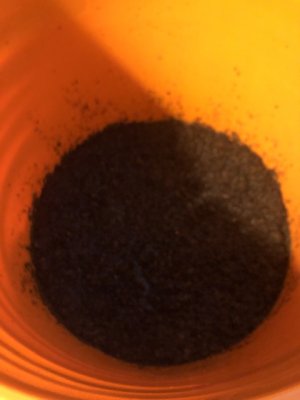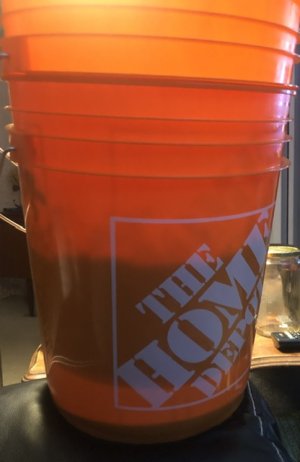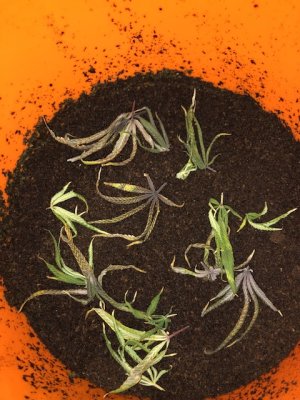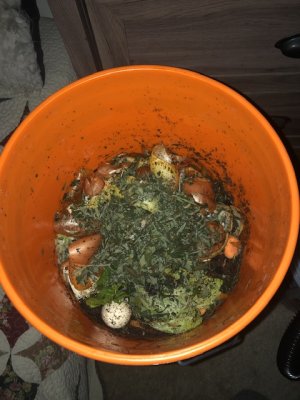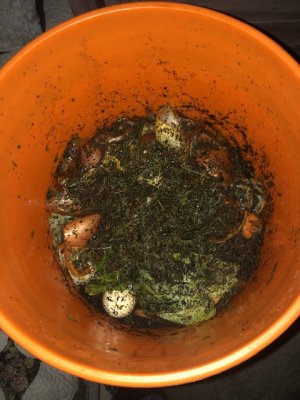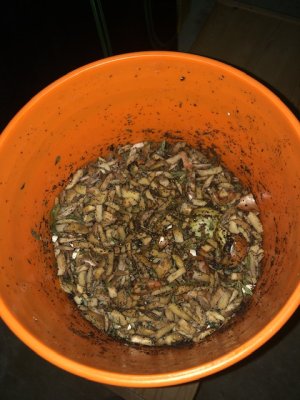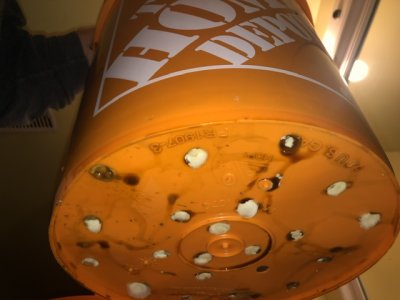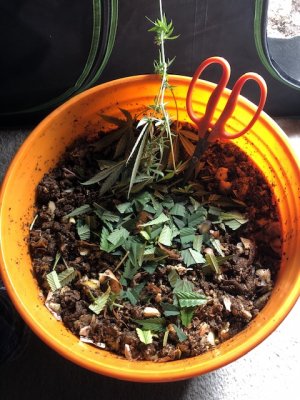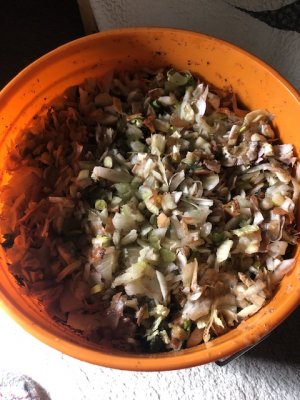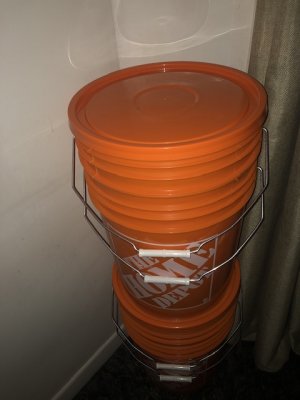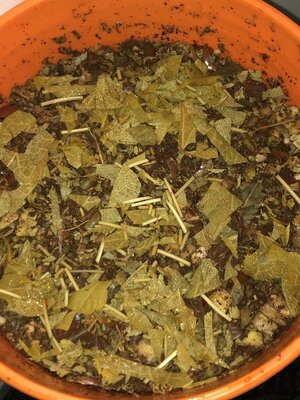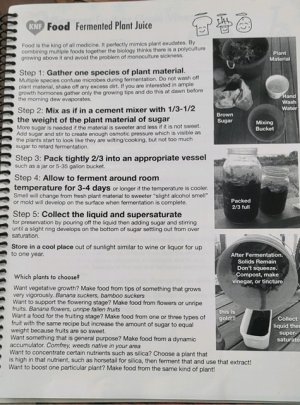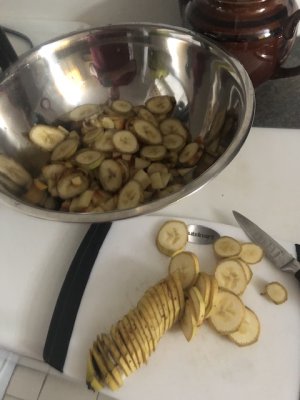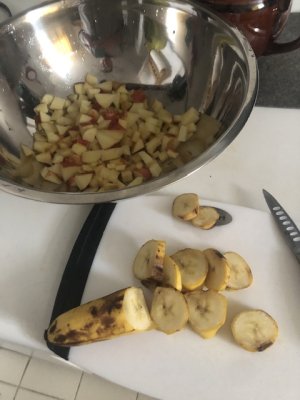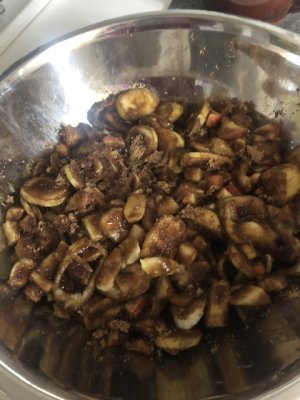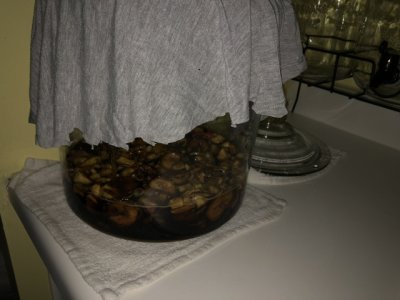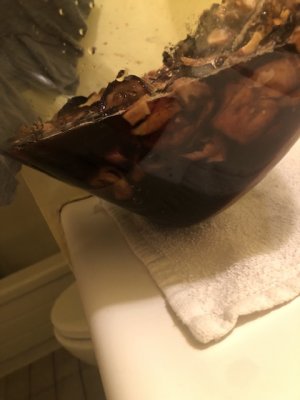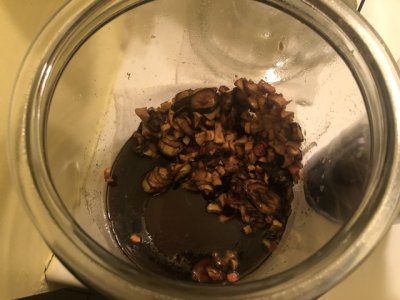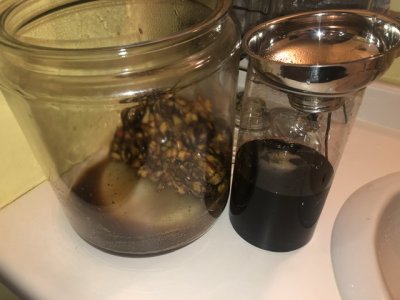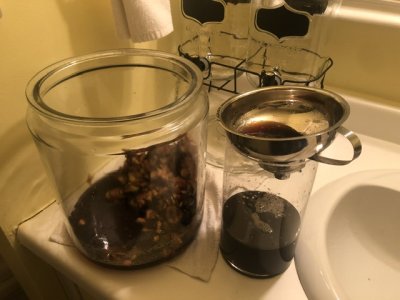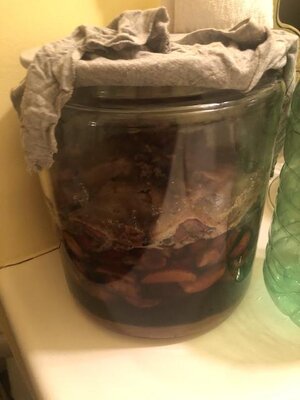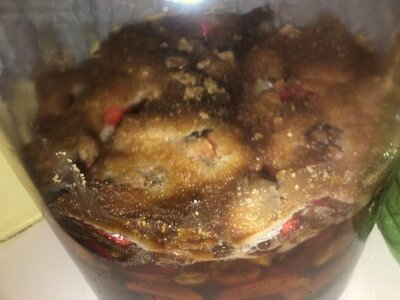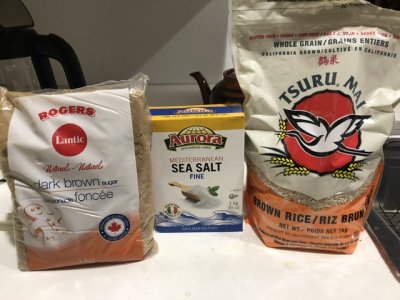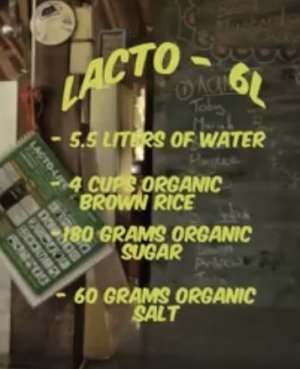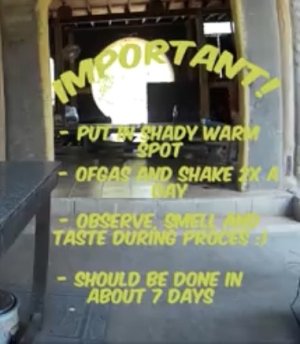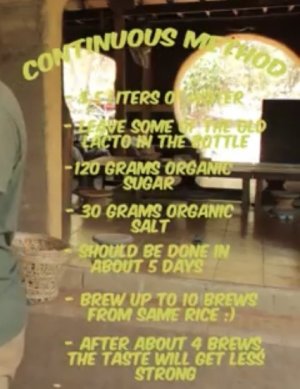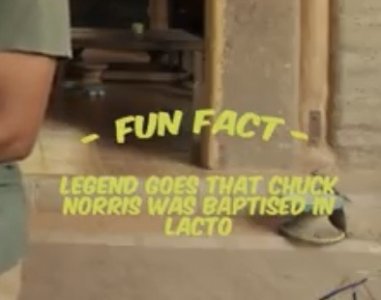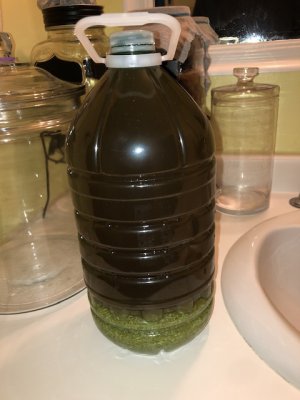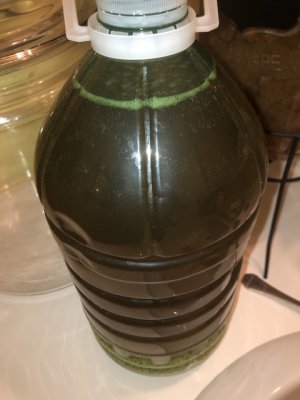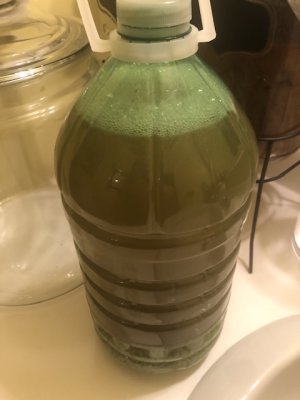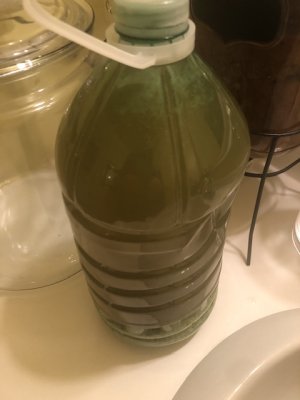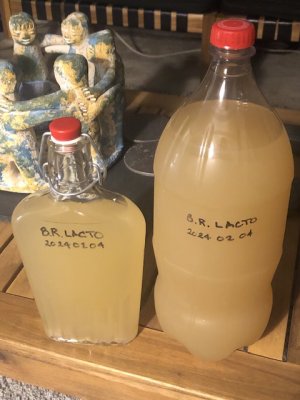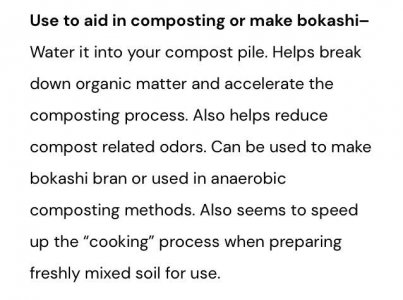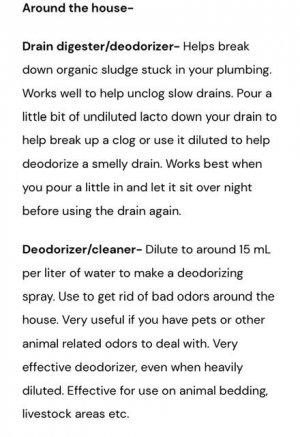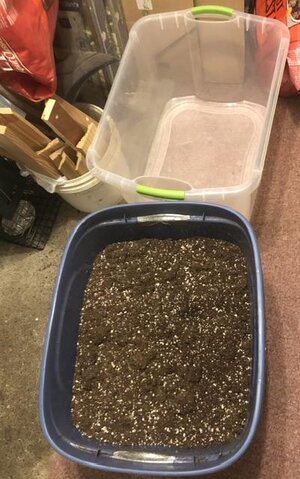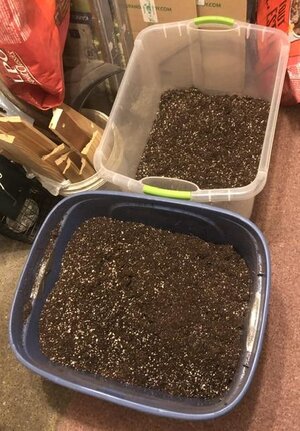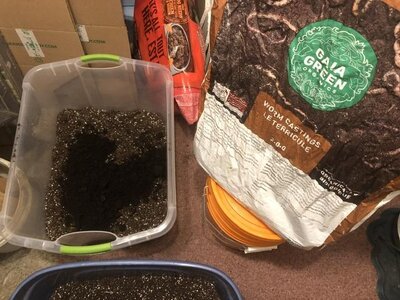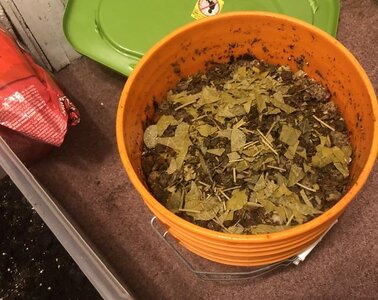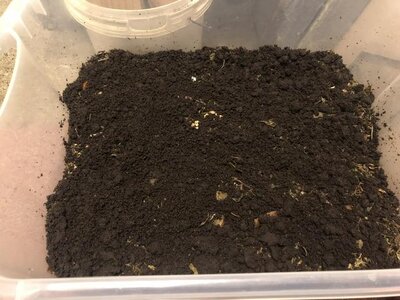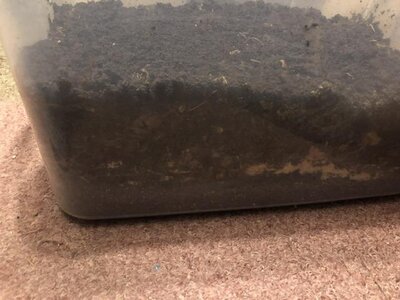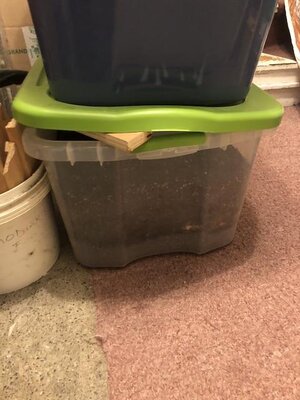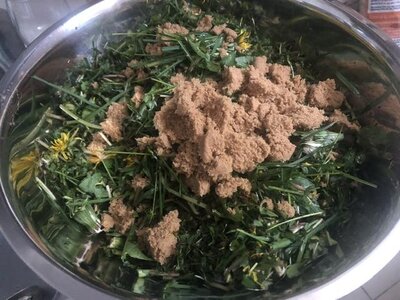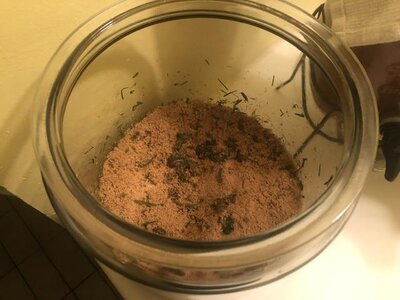FFJ Vinegar
To make this you can use a few methods including just the FFJ. But as I happen to be finishing my FFJ I’ll use the leftovers rather than toss it onto the compost.
Another video can be found here;
Here I have moved all the old biomass, fruits and sugar, into a large container. Basically double the amount of juice you removed and add that much water to the mix. Give it a stir, cover with a clean breathable cloth or t-shirt, and wait. As always the colder it is the longer it will take.
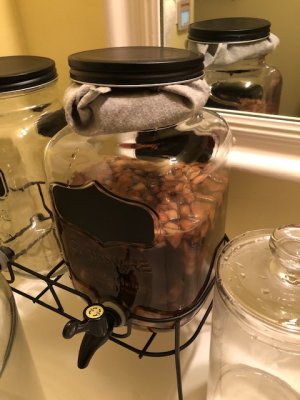
This should all be done in a location without direct sunlight, preferably in place you can leave dark and room enough to maneuver.
Once mixed and stirred let sit until everything is pushed up by bubbles. Then stir it again.

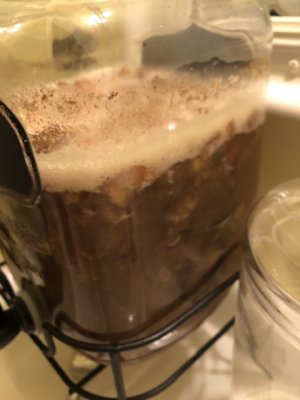
If you happen to notice white or green mold forming, or even black, that’s okay. It just means you need to stir more often. The air is allowing bacteria to grow on the vegetation up top. Stirring will kill any bad bacteria with the acidic vinegar. Leaving it won’t hurt anything, it just looks bad.
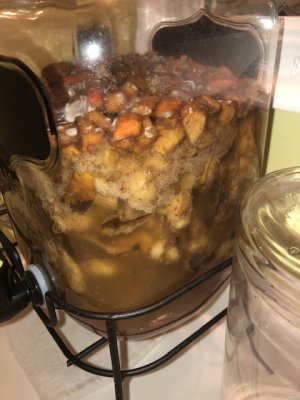

After a week or so you will smell vinegar. Lightly maybe, but it’s there. Eventually the sugar will be all eaten and the bubbles will stop. That’s when it’s ready. You should be checking for PH after the first week or two. This can take between 1-3 months depending on climate and how we start.
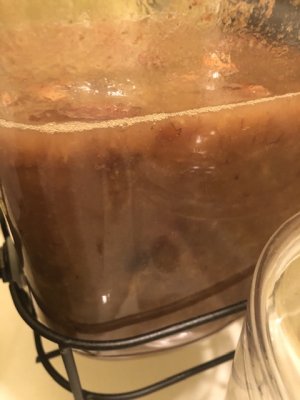
This is looking almost done to me. Time to PH test.
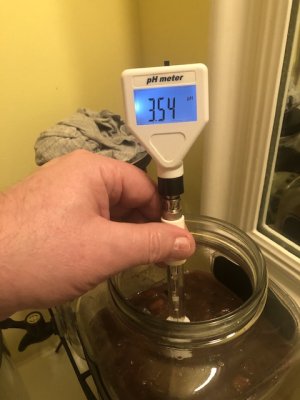
This is the PH of our store bought white vinegar.

Not quite there yet but it smells like our small apple vinegar bottle.
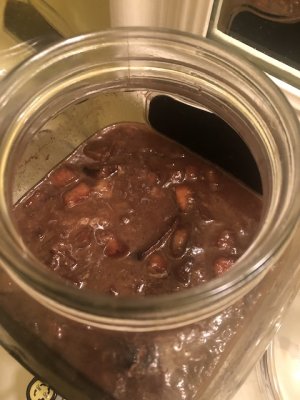
26 days later the acidity is strong enough I haven’t needed to stir the jar to stop mold. It looks like a mother is trying to form on top but stirring is interfering.

I found the top layer had a higher acidity so I strained some and then took a PH reading. (I want 2.5)

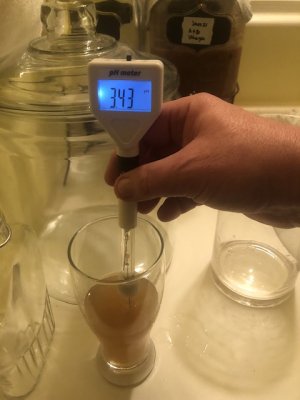
The taste is a light but sweet apple and banana. The smell is more vinegary but still fruity.
It takes between 1-3 months depending on environment and materials used. I think very ripe fruit made things a bit faster imo. I’ll let it go longer and check in another week.
Here is a chart to help know when your vinegar is ready.

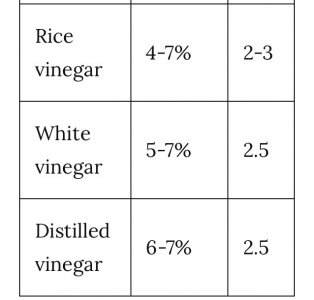
Day 43:
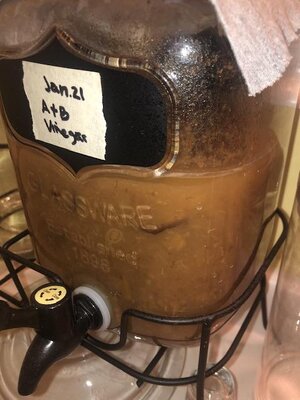

Looks like a mother is trying to form. Mold won’t hurt or spread once the vinegar starts but I stir it anyway. If my wife sees mold she won’t touch or use it.
After this time, 43 days, it’s at PH 2.62-2.65, once I stir and strain a bit into a shot glass to test. (I find the top gets a thin layer of vinegar that is stronger.)
Day 46:
A quick PH check looks good.
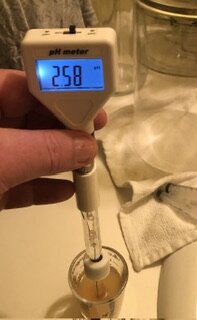
I’ll do a filter into a clean jar I use.
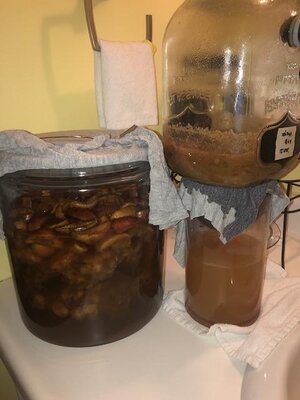
Then wash and put back into the juice dispenser.
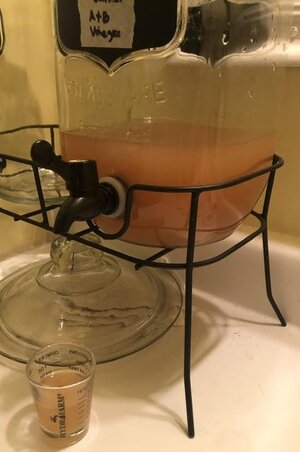
I’ll leave it in this a few days as it’s bubbling a bit still. I’m hoping it will clear up a bit more and settle. It will be easier to pour into the bottles at least and should catch sediment.
I tastes sweet, like apples and then a super sour/tart tang. I like it. Think it would be good in a garden salad. Looking forward to the finished product.
*Not finished yet. Also needs review and content.
